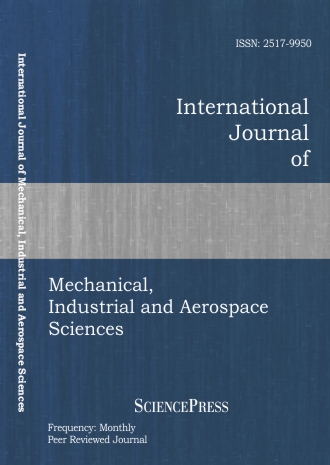
Scholarly
Volume:5, Issue: 1, 2011 Page No: 199 - 206
International Journal of Mechanical, Industrial and Aerospace Sciences
ISSN: 2517-9950
1144 Downloads
Effect of Shell Dimensions on Buckling Behavior and Entropy Generation of Thin Welded Shells
Among all mechanical joining processes, welding has been employed for its advantage in design flexibility, cost saving, reduced overall weight and enhanced structural performance. However, for structures made of relatively thin components, welding can introduce significant buckling distortion which causes loss of dimensional control, structural integrity and increased fabrication costs. Different parameters can affect buckling behavior of welded thin structures such as, heat input, welding sequence, dimension of structure. In this work, a 3-D thermo elastic-viscoplastic finite element analysis technique is applied to evaluate the effect of shell dimensions on buckling behavior and entropy generation of welded thin shells. Also, in the present work, the approximated longitudinal transient stresses which produced in each time step, is applied to the 3D-eigenvalue analysis to ratify predicted buckling time and corresponding eigenmode. Besides, the possibility of buckling prediction by entropy generation at each time is investigated and it is found that one can predict time of buckling with drawing entropy generation versus out of plane deformation. The results of finite element analysis show that the length, span and thickness of welded thin shells affect the number of local buckling, mode shape of global buckling and post-buckling behavior of welded thin shells.
Authors:
References:
[1] Masubuchi K., Analysis of welded structures. Pergamon Press, Oxford,